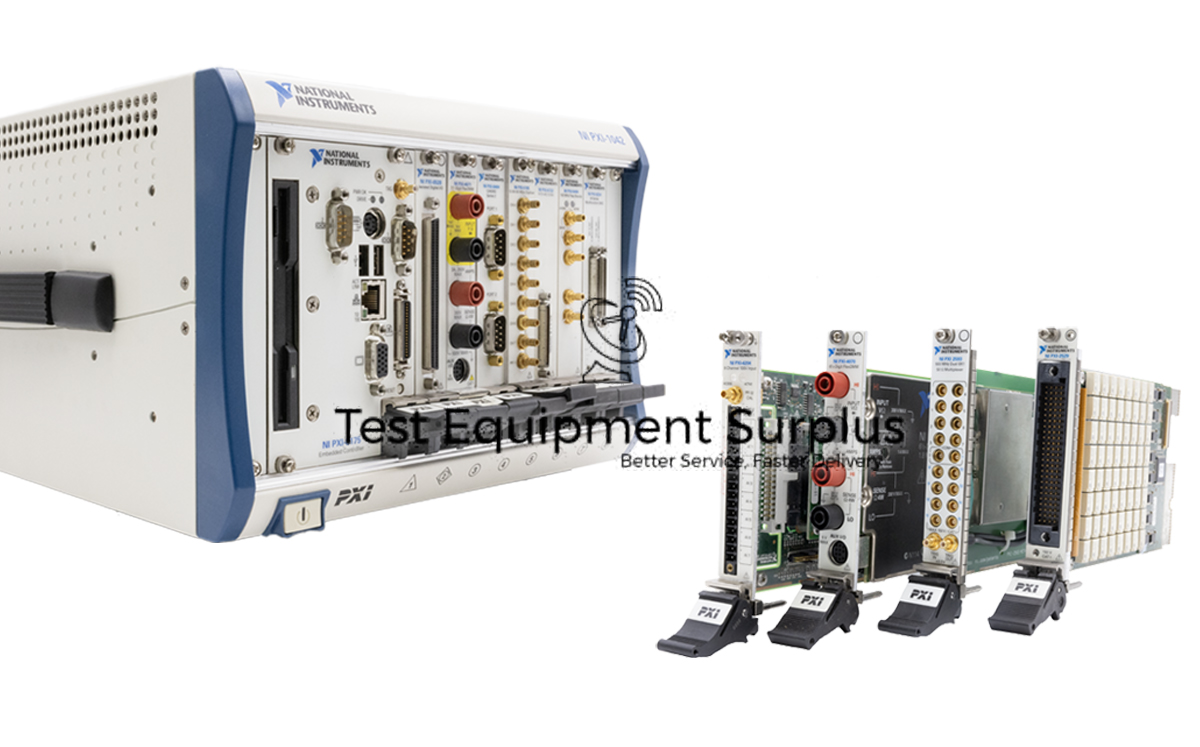Description
The National Instruments PXI-4461, with Part Number 779687-01, is a versatile module designed for two-channel dynamic signal generation and acquisition. It offers a flexible input range through one of six gain settings, allowing precision matching with various signal levels. Moreover, the module features programmable AC/DC coupling and IEPE conditioning, which enhances its usability in diverse sound and vibration scenarios.
Common applications of the PXI-4461 extend across audio testing, automotive noise, vibration, and harshness (NVH) assessments, as well as machine condition monitoring, showcasing its broad applicability in different industry sectors. Users can benefit from the module’s ability to support both differential and pseudo-differential terminal configurations for analog inputs, where it provides 50 Ω of resistance between the external BNC shell and chassis frame, ensuring signal integrity and reducing noise.
The built-in digital filters are critical in preventing aliasing, maintaining the fidelity of the acquired signals. Each input channel can be individually configured, allowing for customized setups that can adapt to various testing requirements or device under test (DUT) conditions. This flexibility is further amplified by the module’s synchronization capabilities, where the acquisition clock can be synchronized with other devices in the system, making it ideal for mixed-signal applications.
Triggering options include both digital and analog triggers, providing the necessary control for precise measurement initiation and data capturing. The PXI-4461 boasts 24-bit resolution analog-to-digital converters, ensuring high-accuracy data representation. Furthermore, the sampling rates are software-programmable, including standard audio rates such as 44.1 kS/s for CD quality and 48.0 kS/s for digital audio tape recorders, among other digital audio devices, making the module well-suited for a wide range of audio-related applications.
| Specification | Detail |
|---|---|
| Part Number | 779687-01 |
| Channels | Two-channel dynamic signal generation and acquisition |
| Input Range Design | One of six gain settings |
| Coupling and Conditioning | Programmable AC/DC coupling and IEPE conditioning |
| Applications | Audio test, automotive noise, vibration, and harshness (NVH), machine condition monitoring |
| Terminal Configurations for AI | Differential and pseudo-differential |
| Pseudo-Differential Resistance | 50 Ω between the external BNC shell and chassis frame |
| Digital Filters | Filters to prevent aliasing |
| Configuration | Per channel basis configuration for input channels |
| Synchronization | Acquisition clock can be synchronized with other devices |
| Triggers | Digital and analog |
| Resolution | 24-bit analog-to-digital converters |
| Sampling Rates | Software-programmable, e.g., 44.1 kS/s, 48.0 kS/s |
Question 1: What are some of the key features and applications of the National Instruments PXI-4461 module, with Part Number 779687-01, in the context of sound and vibration analysis?
Answer 1: The benefits of the National Instruments PXI-4461’s flexible input range and programmable AC/DC coupling features in sound and vibration testing include the ability to precisely match the module with various signal levels for accurate measurements, and to tailor the configuration for optimal interfacing with different types of sensors, enhancing the module’s versatility and effectiveness in diverse testing scenarios.
Question 2: What are the benefits of using the National Instruments PXI-4461 module for sound and vibration applications in various industry sectors?
Answer 2: The National Instruments PXI-4461 module offers several benefits for sound and vibration applications across various industry sectors, including its flexible input range with six gain settings for precision signal matching, programmable AC/DC coupling and IEPE conditioning for diverse scenarios, support for differential and pseudo-differential configurations to ensure signal integrity, built-in digital filters to prevent aliasing, customizable input channels for tailored setups, synchronization capabilities for mixed-signal applications, and a variety of triggering options for precise measurement initiation, all complement
Question 3: What are the signal coupling options and IEPE conditioning features in the National Instruments PXI-4461 module, and how do they contribute to the device’s functionality in sound and vibration applications?
Answer 3: The National Instruments PXI-4461 module features programmable AC/DC coupling and IEPE conditioning to enhance its application in varied sound and vibration scenarios.
Question 4: What type of signal conditioning does the National Instruments PXI-4461 module feature to enhance its application in varied sound and vibration scenarios?
Answer 4: The National Instruments PXI-4461 module, with Part Number 779687-01, features two-channel dynamic signal generation and acquisition, flexible input range with six gain settings, programmable AC/DC coupling, and IEPE conditioning, catering to various sound and vibration analysis applications such as audio testing, automotive noise, vibration, and harshness assessments, and machine condition monitoring. It supports differential and pseudo-differential inputs, has built-in digital filters to prevent aliasing, offers individual channel configuration,
Question 5: What are the benefits of the National Instruments PXI-4461’s flexible input range and programmable AC/DC coupling features in sound and vibration testing?
Answer 5: The National Instruments PXI-4461 module offers programmable AC/DC coupling and Integrated Electronic Piezoelectric (IEPE) conditioning, which contribute to its functionality by allowing it to interface with a variety of sensors and to accurately capture sound and vibration data across different scenarios by filtering unwanted DC offsets or enhancing sensor signal quality.




